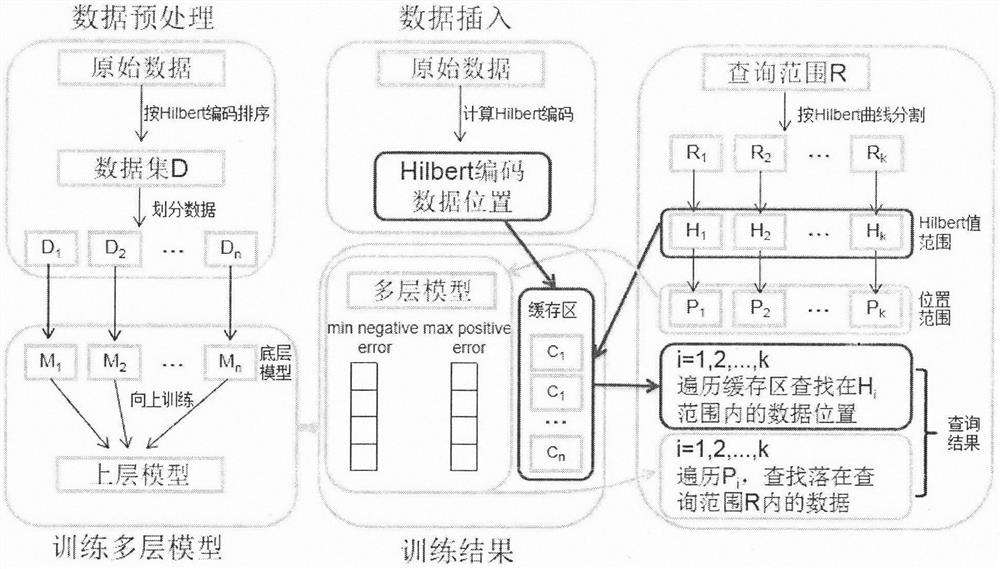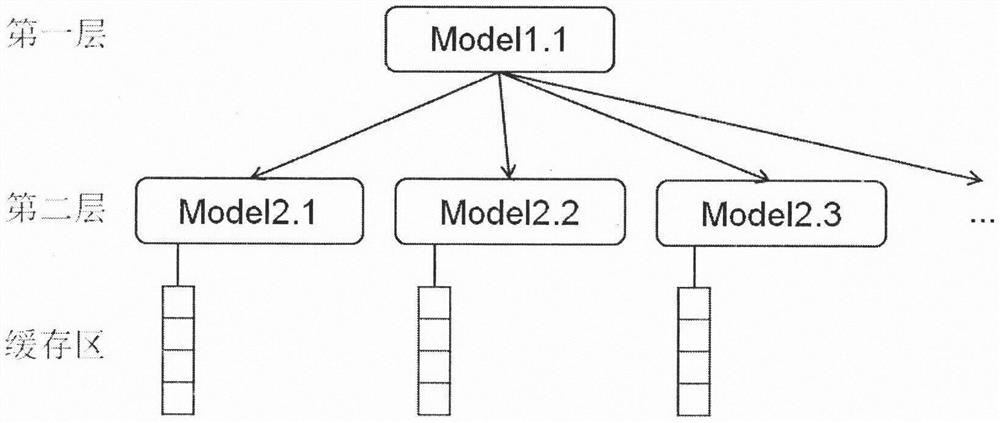Spatial range query method based on extensible learning index
A space range and query method technology, applied in the field of range query, can solve problems such as low query efficiency and frequent disk I/O operations, and achieve the effects of improving index efficiency, reducing data size, and reducing space overhead
- Summary
- Abstract
- Description
- Claims
- Application Information
AI Technical Summary
Problems solved by technology
Method used
Image
Examples
Embodiment
[0019] Embodiment: This embodiment is used to realize the scalable multi-layer learning index and range query method of two-dimensional spatial objects. The flow chart of the method implementation is as follows figure 1 shown.
[0020] 1. Data preprocessing
[0021] The Hilbert space-filling curve can traverse all the points in the unit space to obtain a space-filling curve and map the space object to a one-dimensional space. The generation process of the Hilbert curve is as follows: first divide the plane space into four quadrants, connect the adjacent quadrants with U-shaped curves; then divide each quadrant into four sub-quadrants, and connect the sub-quadrants with curves, and repeat this process. When the order is infinite, a curve that fills the entire plane is produced.
[0022] Data preprocessing such as figure 2 shown. The Hilbert space filling curve is used to map the two-dimensional spatial data to the one-dimensional data space. Calculate the Hilbert encoding...
PUM
 Login to View More
Login to View More Abstract
Description
Claims
Application Information
 Login to View More
Login to View More - R&D
- Intellectual Property
- Life Sciences
- Materials
- Tech Scout
- Unparalleled Data Quality
- Higher Quality Content
- 60% Fewer Hallucinations
Browse by: Latest US Patents, China's latest patents, Technical Efficacy Thesaurus, Application Domain, Technology Topic, Popular Technical Reports.
© 2025 PatSnap. All rights reserved.Legal|Privacy policy|Modern Slavery Act Transparency Statement|Sitemap|About US| Contact US: help@patsnap.com



